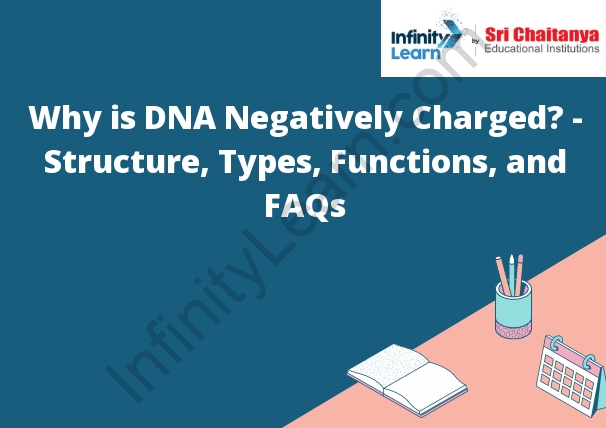Table of Contents
Why is DNA Negatively Charged
The negatively charged phosphate groups in DNA’s backbone interact with the positively charged nitrogenous bases. This interaction helps to stabilize the DNA molecule. One of the many reasons why DNA is negatively charged is because of its phosphate backbone. The negatively charged phosphate groups repel each other, making the DNA backbone relatively stable. Additionally, the negative charge on DNA helps to stabilize the molecule’s structure and keep the individual strands separated. Why is DNA Negatively Charged – Structure Types Functions and FAQs.

What is DNA?
DNA is a molecule that encodes the genetic information of a living organism. It is composed of four nitrogen-containing bases: adenine (A), cytosine (C), guanine (G), and thymine (T). The sequence of these bases determines the genetic information.
Discovery of DNA
The discovery of DNA is one of the most important scientific discoveries of all time. DNA is the genetic material that encodes the information necessary for the development and functioning of all living organisms. DNA was first isolated and identified in 1869 by Friedrich Miescher, but its role in heredity was not understood until the early 1900s, when it was shown to be the basis for genetic inheritance. The structure of DNA was first elucidated in 1953 by James Watson and Francis Crick, who won the Nobel Prize in Physiology or Medicine for their work.
Types of DNA
There are two types of DNA: nuclear DNA and mitochondrial DNA.
Nuclear DNA is found in the nucleus of the cell and is responsible for carrying the genetic information that determines the characteristics of an organism. Mitochondrial DNA is found in the mitochondria of the cell and is responsible for producing energy for the cell.
What is the Structure of DNA?
The structure of DNA is a double helix. The double helix is formed by two complementary strands of DNA that wind around each other. The strands are held together by hydrogen bonds.
Functions of DNA
DNA (deoxyribonucleic acid) is a molecule that encodes the genetic information of organisms. The DNA molecule is a double helix, made up of two strands of nucleotides that are complementary to each other. The sequence of nucleotides on one strand dictates the sequence of nucleotides on the other strand. The function of DNA is to store and transmit genetic information from one generation to the next.
Why is DNA Negatively Charged?
The negatively charged phosphate groups in DNA’s backbone make it a negatively charged molecule. This negative charge is important for the molecule’s function, as it helps to keep the DNA strands separated from each other.
Why is DNA Negatively Charged – Structure Types Functions and FAQs.









